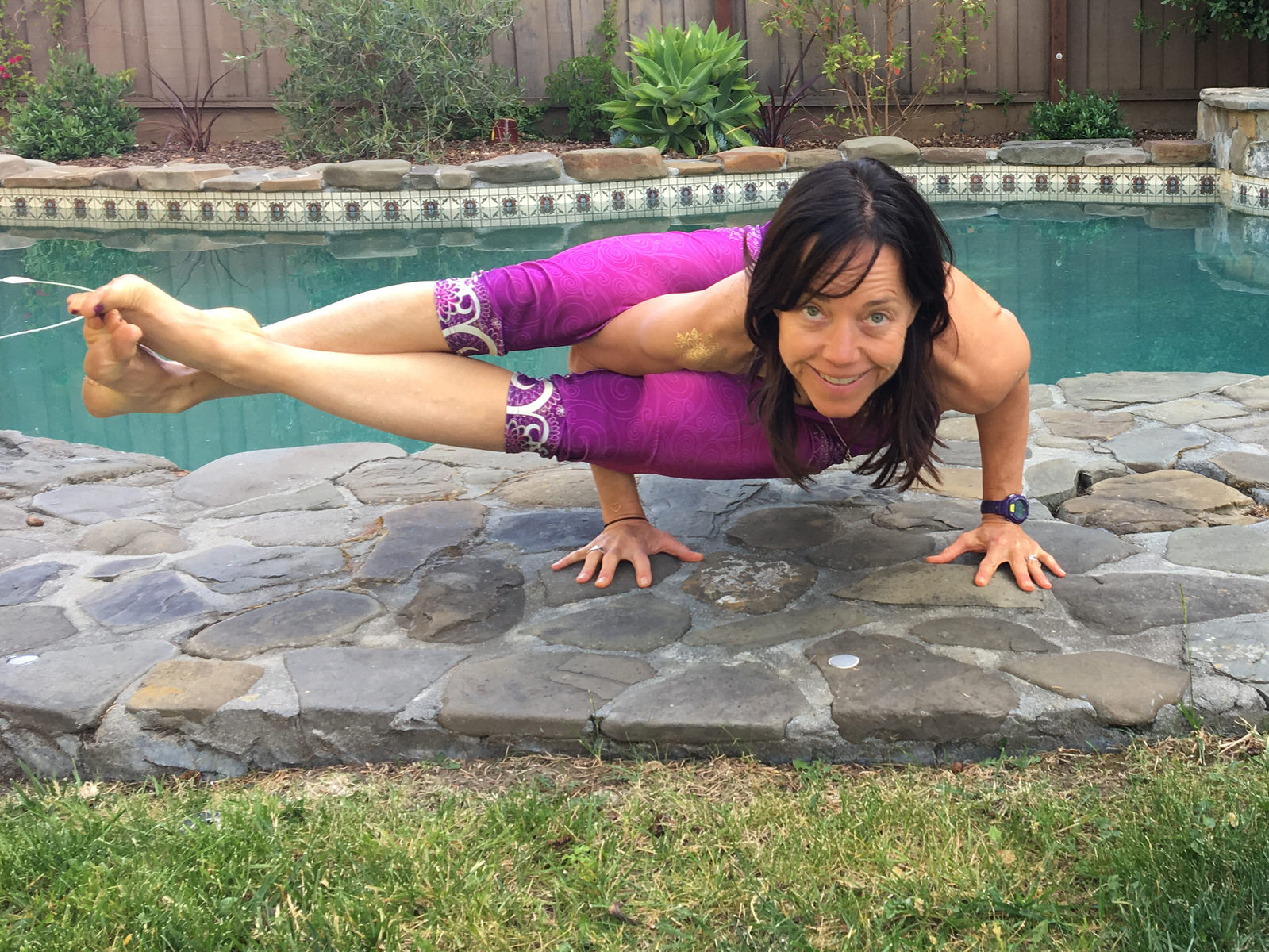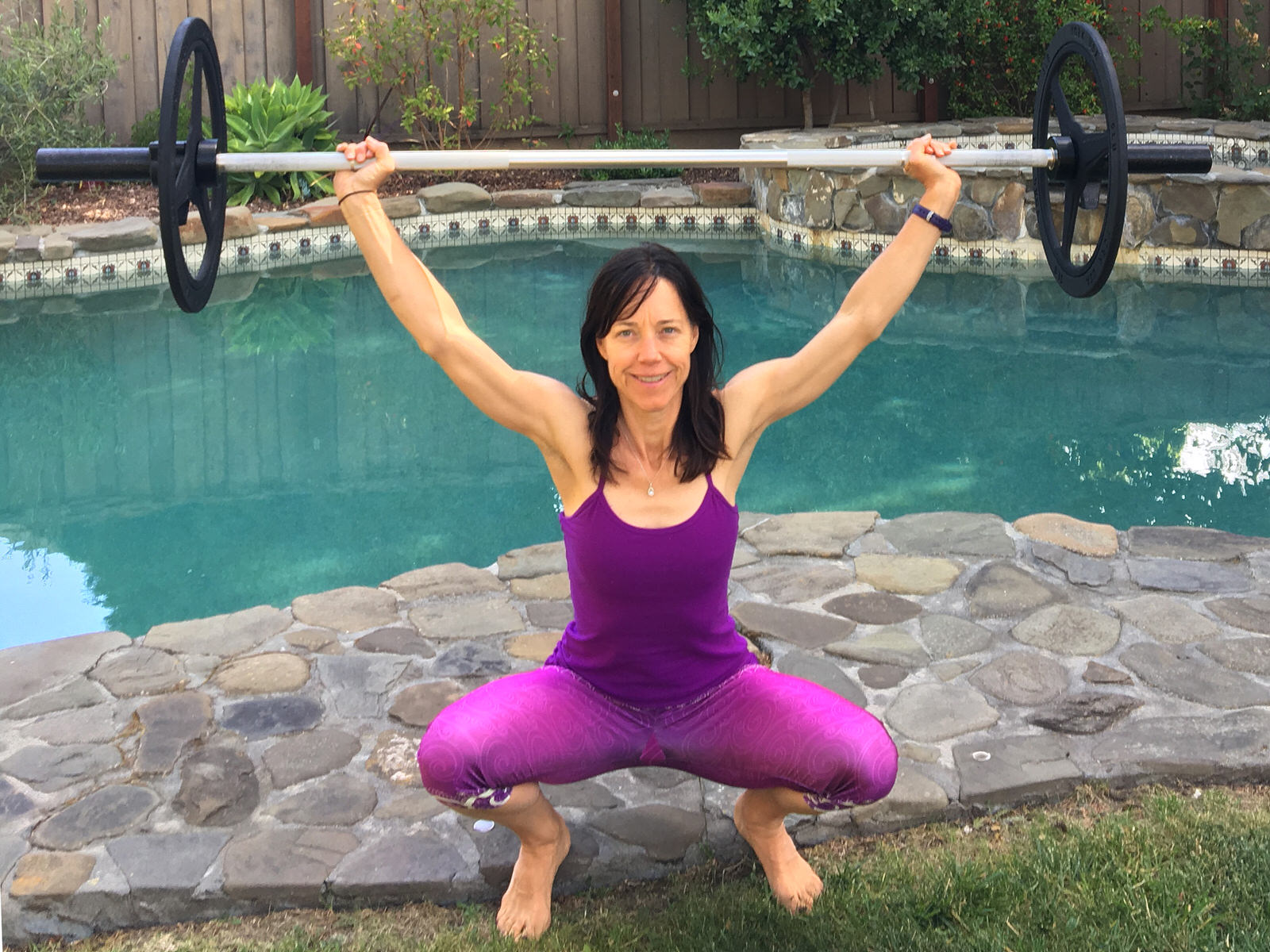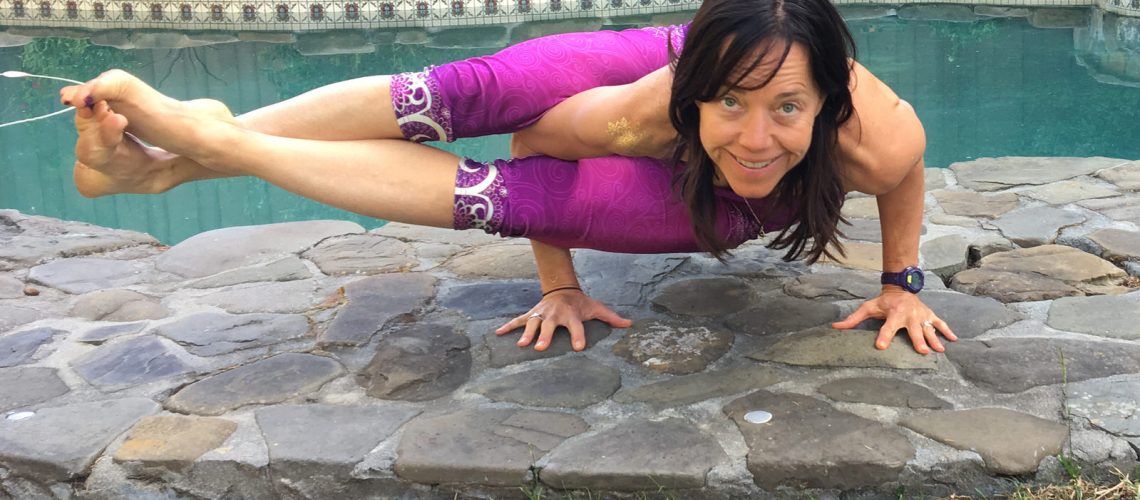Guest Post: Michelle Darby Ross-Yoga Instructor
(Practicing yoga 20 years, teaching 15 years)

When my friend introduced me to The Happy Body, I was full of injuries and twenty pounds too heavy. I was in my mid-40s and noticing all of these negative shifts in my yoga community. All of a sudden, there were more injuries, more social scandals, and more unhealthy practitioners. Something needed to change.
Within 6 months of practicing The Happy Body under the direction of Jerzy and Aniela, I transformed my body and healed my mind. While immersing myself in The Happy Body program and teaching yoga, I have discovered how profoundly similar both practices are in purpose and design. But I also discovered how profoundly different they are in practice and integration.
Similar roots
Vanity and Pain
Initially, many people enter the path of yoga and The Happy Body for the reasons of either vanity or pain. For most, the day of reckoning arrives sometime in their 40s. We start to change — cottage cheese legs, donut waists, and chicken cutlet triceps — and we develop chronic pain from a combination of injuries and unhealthy lifestyles. People arrive at the door of a yoga studio or The Happy Body, often as a last resort, with a desire for a new, pain-free body that looks good in a bathing suit. Preferably in 60 days!
“Junk body, junk mind”
All masters know what brings people in the door is not what is really broken. A broken body is just a broken mind, and biology cannot be rushed. Both Jerzy & Aniela and the ancient yogis from India would say, “just get on your mat every day and the rest will take care of itself.” Start with the body: strengthen, stretch, and balance with consistency, and slowly the mind will follow. The ultimate purpose of the practice is our spiritual development, obtaining mastery, and connecting with our inner and outer life.
“Your body, the master’s mind”
Until the mind is independently strong and healthy, it needs the master’s direction. I have heard this echoed over the years both from yoga masters as well as Jerzy & Aniela. Initially the mind is weak, has too many bad habits, and its fatalist perspective is running the show. “I’m just getting old, it’s genetics, I’m too busy, I’ll start tomorrow, I’ll sleep in, one day doesn’t matter.” Instead, follow the master’s direction, precisely, without variation. Over time, your body and mind will heal, strengthen, become more flexible, and obtain mastery. You become your own master, a witness to your choices, and a co-creator of a happy, balanced life.
Different Trees
Yoga, tree of entertainment
This is where modern, pop-culture yoga and The Happy Body diverge. Yoga has been ripped away from its ancient roots. Today, what you see in yoga practice is entertainment, tailored to meet trends and cater to disconnected lifestyles. Every month, it seems a new style of yoga appears: yoga under a disco ball, yoga in a salt cave, even naked yoga.
For twenty years, I found myself leaving my intentions and spiritual journey on the mat, in savasana, at the end of class. I would grab my muffin and latte after class and drive like a bat out of hell, late for life, running yellow lights and honking at people walking too slowly in crosswalks, never remembering the peace or strength I had just worked to accomplish. Classes were entertaining — music, mirrors, heat, aromatherapy, spiritual messages. My mind would enjoy the experience but it came at a price. My mind wasn’t strong and the focus was not on my internal experience, and thus my body got weaker and more broken. The end result, years of overstretched hamstrings, chronic neck, SI & piriformis pain, ACL & meniscus surgery, digestive troubles and chubby legs. I was totally out of alignment physically, mentally, emotionally – a broken body and a broken mind.
I recall 15 years ago when I had just started teaching yoga, a student said, “why should I practice yoga if I will end up with a body like yours?” I felt exposed and full of shame. I did cleanses regularly, including a 21-day Master Cleanse, a month of panchakarma in India, followed a raw vegan diet, 3 hours of daily meditation, and practiced yoga 5 times a week. Yet, I didn’t have all the tools I needed to obtain and live with a happy balanced body and mind, let alone mentor or teach others.
Fifteen years later, the trend continues. Teacher trainings primarily focus on asanas, meditation, breathing, spiritual theory and sequencing a class. Almost none of the modern day yoga gurus understand, integrate or have mastery over the diet and lifestyle piece. Mindfully nourishing the tree, i.e., the body and the mind, throughout the day is simply not part of the curriculum.

The Happy Body, the tree of enlightenment
The Happy Body’s emphasis on mastery, nutrition, exercise, relaxation, and mindfulness are the missing pieces in today’s yoga practice.
Unlike current pop culture yoga gurus, Jerzy and Aniela are true masters. They practice what they preach 24 hours a day. Their bodies and minds are strong, flexible and powerful. Jerzy and Aniela have spent their lives designing a precise system for a fully-integrated practice that heals both mind and body every day. You can’t lift weights or meditate 24 hours a day, but you do move and eat all day long. Why not do both with intention, ease, and comfort?
A nourished tree
The Happy Body diet is made up of three parts. The first is the food; the diet is primarily anti-inflammatory foods and small portions of meats, oils and grains. The second part is the rhythm of eating: every 3 hours over a 12-hour period. The third and final part is calculating the correct caloric intake for each meal based on your ideal body weight. You don’t need to count calories or feel deprived of foods you love; this practice simply teaches you to eat simple, fresh, anti-inflammatory meals at the right time and with the correct portions. Just like the ancient masters of yoga, Jerzy and Aniela know that in order for the mind to transcend, the body’s diet and digestion needs to be light, balanced and efficient.
A mindful tree
A lifestyle of meditation is just as important as the weightlifting and the daily diet in The Happy Body. Every action and non-action is meditation practice. It starts with the mindful weightlifting. 18 weight lifting exercises practiced in a specific sequence incorporating the breath and training the mind to keep track of repetitions and stay in the moment. A five-minute meditation at the end of weightlifting with music and aromatherapy.
A simple, mindful lifestyle is a key value for both the ancient yogis and The Happy Body.
Sure, anyone can follow The Happy Body methodology for 6 months and look better in the mirror, but the ability to sustain the change happens when there is mastery in the mind and execution in the correct and balanced choices you make every day about food, exercise, meditation, and rest.
An unbounded tree
On this journey towards mastery with The Happy Body, I’m now doing yoga poses with strength and flexibility I didn’t have 20 years ago. I’m now able to teach and practice yoga without seeing the chiropractor 3 times a month. My yoga students now ask me, “what is your secret?”
I’ve found that The Happy Body has complemented all the other activities I enjoy by strengthening and nourishing me. Just this past year, I’ve started skiing again for the first time in almost 20 years. I’m regularly outside running, jumping, biking, wrestling and playing with my 8-year-old twins. No injuries, free of pain, and the same body weight I had when I was 18 years old. I’m healthier now at 45 then I was at 22 when I was doing triathlons.
Here is my current mantra, integrating both my yoga and Happy Body world: Sthira Sukham Asanam, Patanjali sutra 2.46, “Resolutely abide in a good space-steady sweet ease one day at a time.” The Happy Body for life.
DEEPER CONTEMPLATION
Is there an inner intelligence in the physical activity you’re currently practicing? Is it complete, or can you pinpoint a missing element?
Leave your response below in the comments.



What a great article! I think many of us in our mid to late forties are struggling with trying to stay young and not growing old gracefully. I wish I lived there and could take classes with Michelle!
Beautifully said Master Michelle!
Incediable article and very true of your life! Very proud of you Michelle! ……your Mom
Spiritual redemption through mindful movement.
We are, as the saying goes, spiritual beings in a material body. The spirit manifests through its physical form, and the two do not always cooperate. Lots of days I feel good when I get up, but there are other days when I feel anxious, achey, or out of sorts. I often don’t want to exercise those times when I feel crummy, but that is when it is most important.
I narrow my focus to the moment at hand and pay attention to the simple steps, one at a time: breathe in, animate my body, do the exercise, breathe out, relax. It is a 10 second effort, and no matter how out of sorts I am I can always manage a 10 second effort.
So, repetition by repetition, 10 second effort after 10 second effort I work through the exercises. And as the body responds, the mind and emotions respond too. It always happens. And then the mind clears, the emotions settle. A sense of clarity and grounding returns and the spirit and body re-integrate with one another.
Good! This post is creative, you’ll find a lot of new idea, it gives me inspiration. I believe I will also inspired by you and feel about extra new ideas. thanks.